The Caribbean: Round Two
- sunshine1920
- Apr 26
- 17 min read
Circling Back to the Panama Canal
St. George’s, Grenada
After 4 rough days at sea, we arrived back in the Caribbean. The good news is that the seasickness patches worked, and I managed to get by fairly comfortably. I did have quite the headache when I took them off, but apparently that's a common side effect.
We are back in St. George’s, Grenada and while it’s not a new destination it’s great to be able to walk around on land after so long on board. To start off we headed up to Fort George which overlooks the cruise terminal. This 18th century French fortress was closed for restoration the last time we were here and still is, but you can still check out the viewpoint at the top of the hill. From here we headed back down and walked along St. George’s Harbour and down the coast to Grand Anse Beach. After a walk along the beach our friends took the water taxi back to the cruise terminal and we wandered our way back. Of course, we had to stop at the grocery store for snacks along the way. It was a nice long walk, and it felt amazing to be out and moving.
Our second day in Grenada ended up being a bit of a bust. Originally our ship was supposed to be docked at the container port in St. George’s, but there was a cargo ship in the way that was having mechanical issues. For our first day they were able to accommodate us at the cruise pier, but it was fully booked for the second day. The solution was to allow residents to disembark by 9:30 am this morning, the ship would move out to anchor for the day and once one of the other ships left ours would return to pick up our residents. Unfortunately, this wouldn’t be until 7:00 pm. That means almost ten full hours on shore which for us was just too much. Without driving all over the island there isn’t really that much to do, so we opted just to stay on board for the day. They did look into getting tenders for the day, but there weren’t any available and ours are out of commission for the moment.
Kingstown, St. Vincent (and the Grenadines)
After collecting the residents that stayed ashore for the day we set sail for St. Vincent. This is a new country that we haven’t visited in the Caribbean. We packed a lot into our first day because the weather is being finicky, and we might get rain while we’re here. There is another ship in port with around 5000 passengers on board. I must stay that Kingstown is not really big enough for that many people. They are building a new cruise terminal, but right now the cruise ships share the ferry terminal, and it was slightly chaotic. You get funneled out through a little shopping complex where they had performers, and it was packed.
Once we finally got out of the port area the streets were teaming with locals and tourists alike. We walked across town to St. Mary’s Cathedral which had gothic vibes and definitely makes a statement. From here we headed over to the Botanical Garden which is the oldest botanic garden in the Western Hemisphere. It was established in 1765 and is also home to several St. Vincent parrots. We tried to get photos, but the mesh on the aviary was really tight and the pictures didn't turn out. The garden itself wasn’t particularly grand, but it was beautiful and serene. There was a wedding taking place in the garden while we were there, and I managed to pet a cat. I also managed to roll my ankle and fall on my recently healed arm, but aside from some soreness and a few scratches I walked away from it relatively unscathed.
We proceeded to hike up to Fort Charlotte which was a pretty decent climb. The 1806 fortress is currently under restoration, but the lighthouse keeper was able to tour us through…for a fee. The lighthouse is located within the fort and is still in operation and manned 24-7. The fort wasn’t very extensive, but the views were pretty great. On the way back down, we stopped at the bank for some local currency and at a few grocery stores to see what they had to offer.
On day two Mike got up bright and early to join a group of residents hiking La Soufriere Volcano. A driver picked them up and drove them the hour and a half to the volcano. They picked up a local guide on the way and headed up. Unfortunately, the weather we had been trying to avoid rolled in and they got rained out just before the top. They almost made it, but the wind and visibility were making it unsafe. Not to mention the views were non-existent at that point. So, they carefully descended and had a soggy drive home.
I passed on the hike and in hindsight I’m glad I did. My ankle felt great this morning, but the weather wouldn’t have been much fun. Instead, I puttered around the ship and worked on a puzzle with Sue. Once Mike returned, we headed back to the grocery store to spend the last of our local currency. We won’t be needing snacks any time soon that’s for sure.
Fort-De-France, Martinique
This wasn’t a new port for us, but we did manage to explore a few places we didn’t get around to the last time. We started our first day off by using our GPS My City app to take a self-guided walking tour. Mike led us around town and using the app gave us some details about the highlights of the city. While we didn’t see many new places, we did learn a thing or two about the history of Martinique and its interesting architecture. Once we completed our tour, we wandered around the old town area a bit more and made our way back to the ship. My ankle was acting up a little bit, so I wasn’t up for our usual long walk.
We arrived back on the ship, and they were in the middle of a power outage to conduct important maintenance, so we sat downstairs with a group of friends and chatted. Finally, power was restored, and we were able to get cleaned up for dinner.
For our second day we managed to find mostly new territory. We hiked up to the Chapelle du Calvaire, a tiny little chapel overlooking downtown. The views were great from the top and it was a quiet little spot. Afterwards we made our way to the Église Catholique Sainte-Thérèse. This church might have been beautiful back in the day, but it has deteriorated quite a bit and is no longer in use. To get to it we ended up having to hike down from the small chapel and then back up another steep incline. It was a little more physical than we had planned, but the views were good, and the cardio didn’t hurt us any. We headed down to water level behind the other cruise terminal and walked back into town.
The grocery store was still open for a little longer, so we stopped for ice cream and wandered the waterfront while we enjoyed it. There really wasn’t much open the two days we were in town because it was the weekend. There were two other ships in port on our second day, but most of the shops still closed down for Sunday.
Bridgetown, Barbados
The first time we visited Bridgetown we were only there for the day, so we were excited to return and explore a little further. On our inaugural stop we fell prey to the smoking hot temperatures and oppressive humidity. This time around we felt a little better prepared. South America; particularly Brazil, has been conditioning us for weeks. I imagine the time of year also played a role, April vs. November, but we felt comfortable walking much further.
We walked for about an hour to reach the Garrison Savannah which has been used as a horse racing venue since 1845. Along the edge of the track is also George Washington House, a plantation house that George Washington stayed in while visiting Barbados. It has been turned into a museum and café and also features garrison tunnels. We didn’t go in, so we didn’t see the actual house, but when we returned to the ship, we looked into it a little more and realized we should have gone in when we were there.
We walked back the same way along streets filled with churches and beaches covered in umbrellas. There was really only one spot on our walk that you could get to the beach without running a gauntlet of people trying to sell you chairs and an umbrella for the day. Pebbles Beach was the only one easily accessible. When we got back to the town center we wandered back to Queen’s Park. We visited the last time to see the Ancient Baobab Tree, but they were doing construction, and we couldn’t get near the tree. This time the construction had wrapped up and we were able to get up close and get a good look. The tree is absolutely massive, it’s not very tall, but it is very wide (81 feet). The tree is the largest and oldest tree in Barbados and is believed to be over 1000 years old. It is not native to the island, and they think it came from West Africa.
The second day we waked the other direction to the Seafloor Sculptures on the beach. On this side we were able to get to the beach easily and walk along it for a long time. We passed the Stade’s West Indies Rum Distillery and Beach Bar. When we turned around to start heading back, we got accosted by sand flies. We quickly made our way back to pavement and headed back to the ship. Originally, we had wanted to stop at the distillery on the way back for a rum punch on the beach, but we opted to pick some up in the mall just outside the ship and have it on board, safely away from the sand flies.
Later that afternoon we attended a local performance on board by Rhythm of Barbados. It was lively and fun, and we had a good time.
Scarborough, Tobago
I’ve been a little nervous about going to Trinidad and Tobago since I first saw it on the itinerary. In January of 2025 Canada issued a travel advisory for Trinidad because they declared a state of emergency in December of 2024 due to a recent increase in gang violence. However, this is mainly directed at the Port of Spain area on the island of Trinidad.

Scarborough, Tobago was a gem. Scarborough has a laid-back sleepy village vibe and is surrounded by stunning nature. We felt very safe wandering around as usual. From the ship we walked down the Malecon, up to Fort King George, and over to the Botanic Garden. The views from the fort were great. The people in Scarborough were very friendly and welcoming. We finished off our meandering with some ribs for Mike at a local spot. We had a really good day, but it was stupid hot and humid, so we headed back to the ship to cool off and shower.
Port of Spain, Trinidad
Port of Spain is a bit of a different beast. Trinidad in general is much more industrial, and it is where most of the recent crime has been centered. Other cruise lines are recommending travelers not leave the port area if they are not on a guided tour. One of our residents used to live in Trinidad years ago and had contacts here who arranged guided tours for people who were interested. Mike and I weren’t keen on the options provided, so we just went for a walk and stayed close to the port. Right next to the Cruise Terminal there is a Hyatt hotel with a waterfront promenade. We started off by walking down in front of the hotel and then we crossed over the main road via a pedestrian overpass to Independence Plaza. When we were leaving the port, another resident was just returning and he said he felt perfectly safe walking through the plaza to the cathedral, so we decided to give it a go.
Independence Plaza is a long boulevard between the roads of Independence Square North and South. There are trees, sculptures, washrooms, and local vendors along the way and the place was bustling. Everyone seemed friendly and we felt safe the whole time. The Cathedral of the Immaculate Conception at the end of the plaza was lovely with an incredible wooden roof. On the way back we detoured a little to visit Trinity Cathedral, Woodford Square, The Red House (State Parliament), and the Police C.I.D. building. We also stopped at a local vendor for Mike to try ‘Doubles’ a common street food in Trinidad. Doubles: curried chickpeas served on two fried flatbreads with additional sauces added depending on the vendor. It was messy, but Mike really enjoyed the sweet and spicy flavour. We didn’t want to push our luck too much, so we headed back to the ship after this. Honestly, it seemed safe enough, but I’m sure they are in a State of Emergency for a reason. Our brief foray into town was enjoyable and it does look like Trinidad has a lot of interesting places to explore. We would like to return at a more stable time to see more of this beautiful island.
ABC Islands
Often grouped together the ABC Islands of Aruba, Bonaire, and Curacao all share ties back to the Netherlands. While Aruba and Curacao are autonomous, self-governing constituent countries of the Netherlands, Bonaire is a special municipality of the Netherlands. All three islands are desert like with a lot of cacti but are well known for their diving and ecotourism. They are working hard to protect the turtles, flamingos, and donkeys residing on the islands.
Kralendijk, Bonaire
Our first stop is the island of Bonaire and wow! We’ve been through the Caribbean and back again, but this is the first time we’ve really experienced the epically clear turquoise water you dream about. Bonaire is the least developed of the ABC Islands and Tourism is its main economy. They also export salt, and Cargill has a large site for salt ponds towards the end of the island.
We arrived on a Sunday, so not much was open, but we wandered along the waterfront. There are a lot of beautiful bright coloured buildings and vibrant fish swimming right next to the promenade. When we ran out of pathway we headed into town and stumbled on the Bonaire sign. After walking a little farther, we realized we were running out of town; Kralendijk really isn’t that big. We headed back and ventured in a few blocks. Hot and sweaty from our long walk we headed back to the ship for lunch.
After lunch we walked back down the promenade to a swimming area that is surrounded by floating docks. It seemed like a good place for me to try snorkeling for the first time. I was nervous, but it actually went pretty well, and I saw some really cool fish. I also choked on a lot of sea water and man is it salty.
On the second day we followed a self-guided historical walking tour through town and saw a lot more of the colourful buildings. The shops were open, and we browsed a little while we were out.
After lunch we booked a Taxi Tour to take us to the south end of the island. We were able to see some of the popular dive sites, the salt flats, the slave huts, the light house, flamingos and donkeys. It was a great way to see more of the island and our driver was lovely.
When we got back to the ship Mike, and I headed out to snorkel again before supper. We went to a small beach just down from the ship called Chachacha beach. It still blows my mind that you can just step off the shore and see a whole other world beneath the water. Mike was fortunate enough to see a turtle and octopus as well!
Willemstad, Curacao
Unfortunately, the cruise terminal for Curacao is on the windy side of the island. The shore is quite rocky and there are a lot of waves crashing against the rocks. We would have needed to take a cab to one of the beaches further out in order to snorkel safely, so we toured Willemstad instead.
Willemstad is incredibly beautiful. It’s much more built up than Bonaire and lacks the laid-back vibe we experienced in Kralendijk, but it has its own charm. We spent the first day wandering around in awe of the colourful buildings and great architecture. There were lots of great shops to explore and a fort that has been turned into a shopping center with restaurants and stores. Our wanderings took us across the Queen Emma Bridge which is a pontoon pedestrian bridge from 1888. The bridge swings laterally to allow ships to pass through. Our timing was impeccable, and we stepped off just as a ship was leaving and we were able to see it in action.
We headed back to the ship to cool down and grab a snack and then headed back out to try the other direction. There is a Mangrove Park right next to the terminal that we wanted to check out, but it cost $15 USD just to walk through, so we passed. Instead, we walked to Parke Lucha pa Libertat where there are monuments dedicated to important figures that lead Curacao out of the slave trade and to freedom.
We walked a little further to see if we could find swimmable beach that didn’t require a resort pass, but no such luck.
On day two we headed over to check out the Kaya Kaya Street Art. There is a neighbourhood known for its art, murals, and colourful steps. It was a great place to explore, and the murals were amazing.
We spent the afternoon onboard relaxing and then headed back out in the late afternoon. Our first day took us through a local spot that has restaurants and lights strung across the street. We wanted to see it all light up in the evening, so we went out for pizza and then headed over to check it out. It was still a little too bright, so the pictures didn’t turn out great. On the way back to the ship we also got to see the pontoon bridge all lit up. It’s awesome to be somewhere that we feel safe walking around after dark.
Oranjestad, Aruba
Oranjestad is very built up and quite touristy, at least where the Cruise Terminal is. There is a lot of shopping and restaurants, but the architecture isn’t as charming as it was in Willemstad. If we’re being honest Aruba is probably our least favourite stop in the ABC Islands so far. That being said, we tend to stick closer to the ship and I’m sure there are amazing places elsewhere on the island. The beaches are beautiful, and the water is crystal clear, but there is also a lot of sea grass and less fish right along the shore. We started our day with a GPS My City walking tour which took us to the highlights of the town. It wasn’t terribly exciting; although, the museums looked interesting. Our last stop was the Plaza Turismo and Surfside Beach then we headed back to the ship.
Mike really wanted to get some more time in the water, so late in the afternoon we walked over to Druif Beach. The water was quite shallow, and we didn’t see much, but it was refreshing.
For day two in Aruba, we walked down the coast all the way to Eagle Beach checking out the other beaches along the way. It did look like there were some better swimming/snorkeling spots, but they were in front of the resorts and the palapas and chairs were for resort patrons only. It was also pretty overcast and windy, so we didn’t want to get sandblasted on the beach.
Near Eagle Beach is a massive grocery store called Super Food, so of course we stopped in. We bought a warm fresh baguette and some Oreo ice cream sandwiches, neither made it back to the ship. It was a good long walk there and back and we got to see some tiny owls nesting on the beach. It turns out the Shoco (burrowing owl) is Aruba’s national symbol.
We got back to the ship, cooled off and got cleaned up. All aboard isn’t until 9pm tonight, so we headed back out for an early supper. We had shrimp tacos and pizza at a local place near the cruise terminal and it was fantastic.
Next stop…Colombia. After a sea day of course.
Cartagena, Colombia
We weren’t really sure what to expect in Cartagena, Colombia, but the Port Oasis Eco Park was next level. The port itself is a commercial port, but you walk out through the Eco Park. It is a private wildlife refuge that is home to peacocks, flamingos, parrots, macaws, monkeys, sloths, anteaters, turtles and more. It’s a jungle oasis teaming with life. Many of the animals have been rescued from trafficking. They also have a shop and café right there if you don’t want to go any further. The only downside is the taxi drivers at the exit are pretty aggressive.
We took a taxi to the old walled city in Cartagena and spent a few hours wandering around. GPS My City offered up information on the Churches, Squares, and Walls that we explored. Along the way we stopped off at the La Serrezuela Shopping Mall that was built around an old bull fighting ring. The city was beautiful and afterwards we explored the Parque Centenario just outside the gates where we saw another sloth and a few monkeys. It’s smoking hot and humid in Colombia, so we called it a day after this and took an Uber back to the port. Of course, we spent a more time checking out the critters on the way back in.
Now that we had our bearings we felt more comfortable walking from the port; much to the dismay of the cab drivers. Manga, the neighbourhood where the cruise terminal is located is actually quite lovely. It is mainly residential, but bustling with activity and everyone we passed was friendly. We walked back to the area just outside of the walled city and up to the fort, Fuerte San Felipe de Barajas. This imposing landmark was built in the 1600s and has a complex tunnel system running through it. It offered great views of the city, and the tunnels were fun to explore.
On the way back to the ship we got caught up watching the animals in the Oasis Eco Park again. This time we saw more monkeys and I got accosted by a parrot in the aviary. Apparently, I was standing in his personal space, and he didn’t like it, so he grabbed me by the ankle. We also found a kitten on the store patio. It was a little spicy and wanted to play…I may have bled a little.
Cartagena is a beautiful city, and we really enjoyed our time, but the Eco Park is really what took our stay to the next level.
San Blas Islands, Panama
The San Blas Islands are an archipelago made up of approximately 365 islands and cays off the coast of Panama. We were lucky enough to visit one of the 49 inhabited islands, Carti. It is a very small island that is almost completely covered in houses.
Of course, this was a tender port which always comes with challenges. Our day started with face-to-face clearance with Panamanian Officials on board as this was our first entry into Panama. While the residents ran the well-organized gauntlet, the captain was getting our newly repaired tenders in the water. The swell was uncooperative and the first few attempts to moor the tender against the ship failed. They chose to reposition the ship to offer more protection and finally managed to secure the lines for the tender. The captain announced that they were ready to start the tender operation, but stressed that if the sea conditions changed, they would blow the ship's horn and anyone on shore should hustle back to the pier if they heard it.
Given our previous adventures in tendering and the questionable sea conditions, I chose not to go ashore today, but Mike was ready and willing. He went with a friend of ours for a quick tour of the island. It only took them about 10 minutes to walk the length of the island and back, but at least they got to see it. There were local vendors set up selling handmade wears and the quaint village was quite busy. They had arranged for a local performance at 3pm, but Mike forgot about it and returned just before it took place.
I’m sorry to have missed out, but I’m a little leery of tendering these days.
Colon, Panama
Well, we’ve officially come full circle back to Colon. Our ship has sailed all the way around South America and we are ready to head back through the Panama Canal to start our journey north along North America.
Colon hasn’t changed. It’s still a rundown city with a fancy duty free zone and shopping mall located right at the port. For our first day we looped through town and walked down the main street again. There was a large, albeit peaceful protest taking place, so we made quick work of passing through and carried on to the parks running along the coast. It was a pleasant walk, but nothing new. On the way back we wandered the mall and hit up the grocery store before returning to the ship.
On our second day in Colon, I decided to pass on walking and stayed home to work on a puzzle. Mike went with our friend and did the same loop backwards. On the way through the parks they came across a friendly cat that was eager for pets. In town the protest was still taking place but had shrunk significantly and there was more of a police presence. I was bummed that I missed the cat, but otherwise I was happy to stay in and finish my puzzle.
We left Colon around dinner time and headed out to open water to wait our turn to enter the canal. Our assigned time slot is around 4pm tomorrow, so we'll be floating around for a bit while we wait.
Panama Canal
The Panama Canal is fascinating, but once you’ve done it it’s not quite as exciting the second time. Our narrator Gus returned to walk us through the process and give us information on the construction of the canal. Because we didn't enter until later in the afternoon it was dark by the time we reached the locks on the other side. Mike was able to get some cool photos of the canal after dark this time around.
We are officially back in the Pacific Ocean and heading north. Our next stop is Costa Rica. North America here we come!

































































































































































































































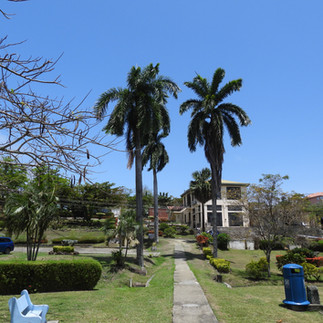



































































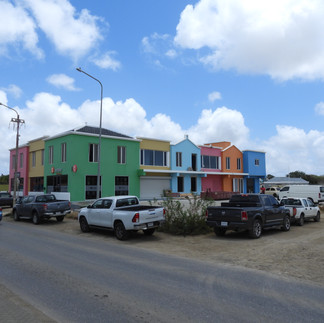





















































































































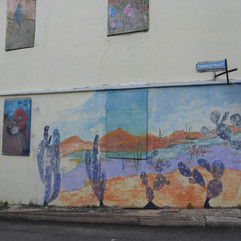































































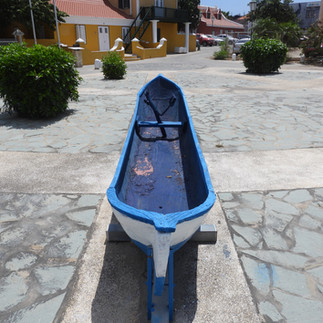























































































































































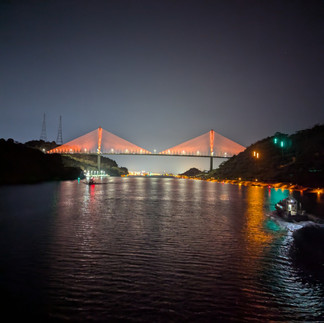






Comments